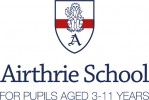KS2 English Grammar & Punctuation Syllabus
Here we have provided the syllabus we cover for KS2 Engliish Grammar & Punctuation. If you click on the section you'd like to look at, an example question will appear. You can also try a demo test to get a better understanding of how BOFA works. The syllabus has been taken from the National Curriculum.
| Yr 5&6 Code Example | Strand | Description | |
|---|---|---|---|
| G1.1 | Nouns | Singular, plural, common, proper, concrete, abstract, collective. | |
| G1.2a | Verbs in present and past progressive continuous | To mark actions in progress. Some irregular past tense forms are favoured in British English; in particular, the past participle of ‘to get’ will be considered creditworthy in the test when formed as got rather than gotten. | |
| G1.2c | Modal verbs | To indicate degrees of possibility, might, should, will, must | |
| G1.3 | Adjectives | Adjectival phrases-the woman, in the red, shiny dress, is the owner. | |
| G1.4a | Conjunctions - cause | e.g. if, because, although,… | |
| G1.4b | Conjunctions - time & place | expressing time, place and cause using conjunctions (e.g. when, before, after, while, so, because) | |
| G1.5 | Pronouns | Pronoun/noun choice to aid cohesion and avoid repetition | |
| G1.5a | Possessive pronouns | Possessive- owning words-my, his, her, yours, its, | |
| G1.5b | Relative pronouns | ||
| G1.6a | Adverbs - ily | The use of –ly in Standard English to turn adjectives into adverbsS | |
| G1.6b | Adverbs - time, place & cause | e.g. then, next, soon, therefore,… | |
| G1.6c | Adverbs - degrees of possibility | e.g. perhaps, surely | |
| G1.6d | Adverbials | Using fronted adverbials | |
| G1.7 | Prepositions | Expressing time, place and cause using prepositions, [for example, before, after, during, in, because of] | |
| G1.8 | Determiners | Use of the forms a or an according to whether the next word begins with a consonant or a vowel | |
| G1.9 | Subject and object | ||
| G2.1 | Statements | how the grammatical patterns in a sentence indicate its function as a statement | |
| G2.2 | Questions | How the grammatical patterns in a sentence indicate its function as a question, e.g. the use of question tags. Subject-verb inversion (eg: Is this your favourite?), or the use of do/does if there is no modal or auxiliary verb (eg: Do you like this one?). A correctly punctuated question tag (eg: This is your favourite, isn’t it?) | |
| G2.3 | Commands | how the grammatical patterns in a sentence indicate its function as a command | |
| G2.4 | Exclamations | how the grammatical patterns in a sentence indicate its function as an exclamation (exclamations starting with what or how, e.g. What a good friend you are!) | |
| G3.1a | Relative clauses | Relative clauses beginning with who, which, where, when, whose, that, or an omitted relative pronoun | |
| G3.1b | Subordinate clauses | Using when, if, that, or because | |
| G3.2a | Noun phrases - description & specification | Expanded noun phrases for description and specification | |
| G3.2b | Noun phrases - adjectives, nouns and preposition phrases | Noun phrases expanded by the addition of modifying adjectives, nouns and preposition phrases | |
| G3.2c | Noun phrases - expanded | Expanded noun phrases to convey complicated information concisely | |
| G3.3 | Co-ordinating conjunctions | co-ordination using or, and and but | |
| G3.4 | Subordinating conjunctions | subordination using when, if, that and because | |
| G4.1a | Simple past and simple present | simple past tense and simple present tense | |
| G4.1b | Verbs in the perfect form | use of the present perfect form of verbs | |
| G4.1c | Modal verbs | indicating degrees of possibility using modal verbs | |
| G4.1d | Present and past progressive | use of the progressive form of verbs in the present and past tense to mark actions in progress | |
| G4.2 | Tense consistency | Correct choice and consistent use of present tense and past tense throughout writing | |
| G4.3 | Subjunctive verb forms | recognising subjunctive forms | |
| G4.4 | Passive and active | use of the passive to affect the presentation of information in a sentence | |
| G5.1a | Capital letters -names | Using a capital letter for names of people, places, the days of the week, and the personal pronoun ‘I’ | |
| G5.1b | Capital letters -sentences | Use of capital letters to demarcate sentences | |
| G5.2 | Full stops | full stops to demarcate sentences | |
| G5.3 | Question marks | question marks to demarcate sentences | |
| G5.4 | Exclamation marks | exclamation marks to demarcate sentences | |
| G5.5 | Commas in lists | To separate main and subordinate clauses | |
| G5.6a | Commas to clarify meaning | commas to clarify meaning or avoid ambiguity in writing | |
| G5.6b | Commas after fronted adverbials | A comma is used after a fronted reporting clause (if applicable). | |
| G5.7 | Inverted commas | Direct and indirect speech. | |
| G5.8a | Apostrophes - plural possession | Difference between plurals and possessive, plural possession-boys' | |
| G5.8b | Apostrophes - contracted forms | The full contraction must be correctly spelt and the apostrophe correctly placed for the award of the mark. | |
| G5.9 | Punctuation for parenthesis | Brackets, dashes or commas to indicate parenthesis | |
| G5.10a | Colons - independent clauses | A colon should always be followed by a lower case letter, unless the word is a proper noun or the pronoun I. | |
| G5.10b | Colons - list | colon to introduce lists | |
| G5.11a | Semi-colons - independent clauses | semi-colon to mark the boundary between independent clauses | |
| G5.11b | Semi-colons - list | semi-colons within lists | |
| G5.12 | Single dashes | Use of the dash to mark the boundary between independent clauses | |
| G5.13 | Hyphens | How hyphens can be used to avoid ambiguity | |
| G5.14 | Bullet points | Punctuation of bullet points to list information | |
| G6.1a | Synonyms | how words are related by meaning as synonyms | |
| G6.1b | Antonyms | how words are related by meaning as antonyms | |
| G6.2a | Prefixes - adjectives | e.g. un- The whole word (ie: the root and the prefix and / or suffix) must be spelt correctly for the award of the mark. | |
| G6.2b | Prefixes - nouns | e.g. super–, anti–, auto– | |
| G6.2c | Prefixes - verbs | e.g. dis–, de–, mis–, over– and re– | |
| G6.3a | Suffixes - adjectives | e.g. –ment, –ness, –ful , –less and –ly | |
| G6.3b | Suffixes - nouns | e.g. –ness, –er. Regular plural noun suffixes –s or –es (e.g. dog, dogs; wish, wishes), including the effects of these suffixes on the meaning of the nouns. | |
| G6.3c | Suffixes - verbs | e.g. –ate, –ise, –ify | |
| G6.4 | Word families | Word families based on common words, showing how words are related in form and meaning | |
| G7.1a | Standard English- verb | standard verb forms (e.g. I did / I done, We were / was, He was / were, isn’t / ain’t) | |
| G7.1b | Standard English- pronouns | pronouns (them / those, that / what) | |
| G7.1c | Standard English- adverbs | adverbs using –ly (run quickly / quick and anything / nothing) | |
| G7.2 | Formal and informal vocabulary | the dfference between vocabulary typical of informal speech and writing, and vocabulary appropriate for formal speech and writing, e.g. ask for / request | |
| G7.3 | Formal and informal structures | the difference between structures typical of informal speech and writing, and structures appropriate for formal speech and writing | |
| G7.4 | The subjunctive | recognise vocabulary and structures that are appropriate for formal speech and writing, including subjunctive forms |























